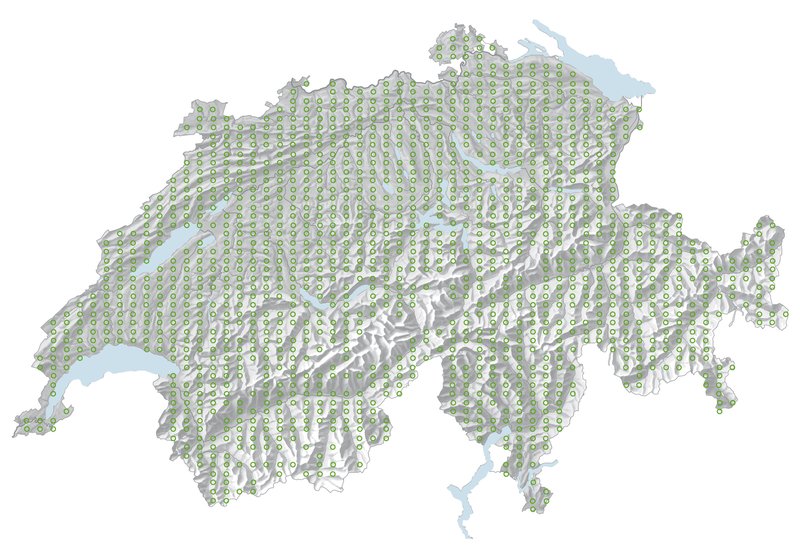Procedure

In order to monitor vascular plants, mosses and gastropods in habitats, fieldworkers first localize each 10 square meter sampling site by means of a GPS device and a magnetic locator. Once the magnet buried at the center is found, the sampling site is delimitated using a piece of string of 1.8 meters of length.
Using the BDM smartphone app, plant species are recorded directly on the spot. While this usually eliminates the necessity of transferring field notes to a computer, some plants need to be collected for subsequent identification. Mosses and gastropods are always passed on to experts for identification.
Sampling area

The circular sampling area for terrestrial habitats is 10 square metres and is highlighted in orange above for clarity.
Monitoring network

The monitoring network for biodiversity in habitats comprises around 1450 measuring points, each 10 square metres in size. A distinction is drawn between forest, meadows and pastures, settlements, fields, alpine pastures and mountain areas as habitats. Vascular plants, moss types and snails are monitored.







